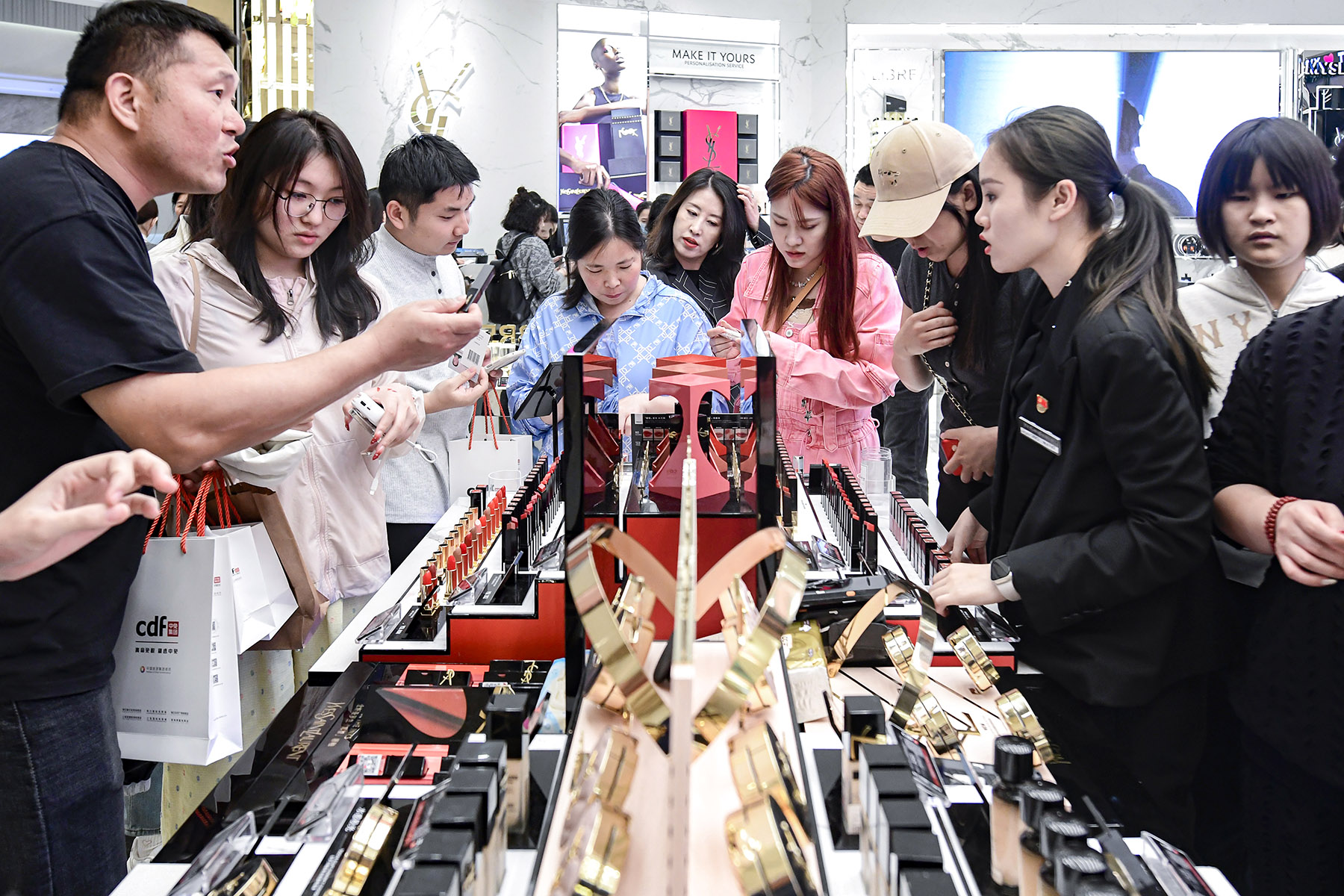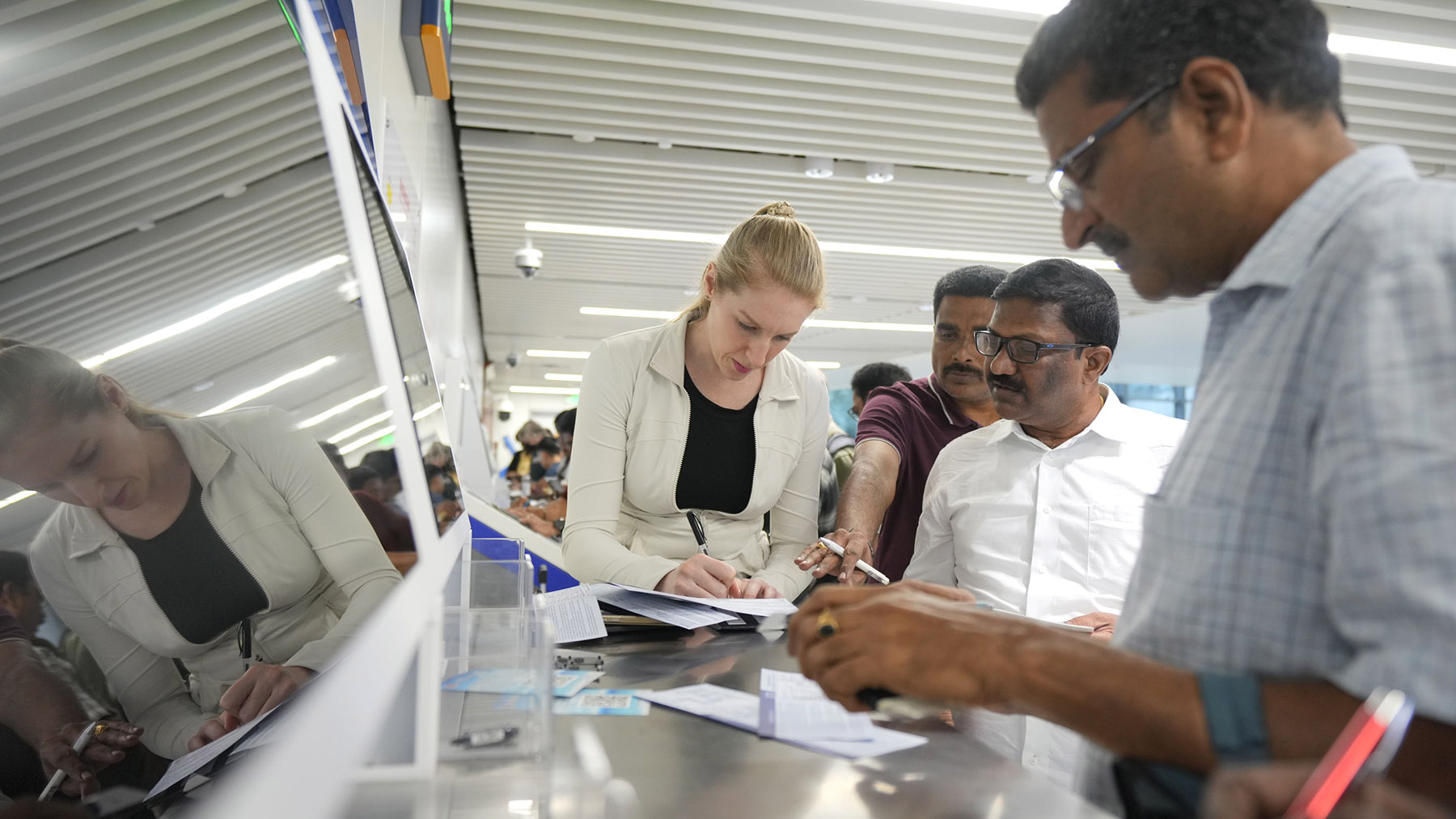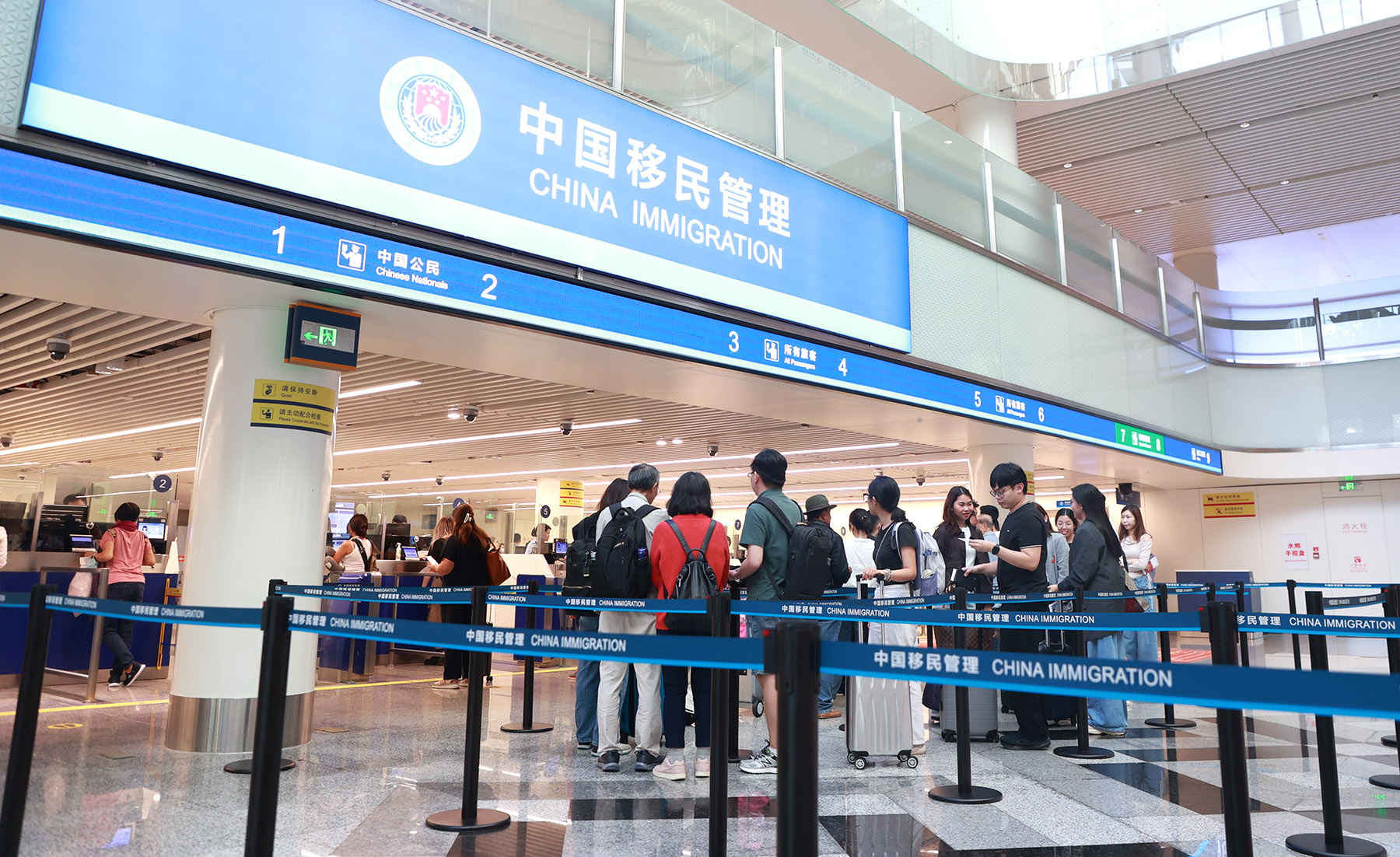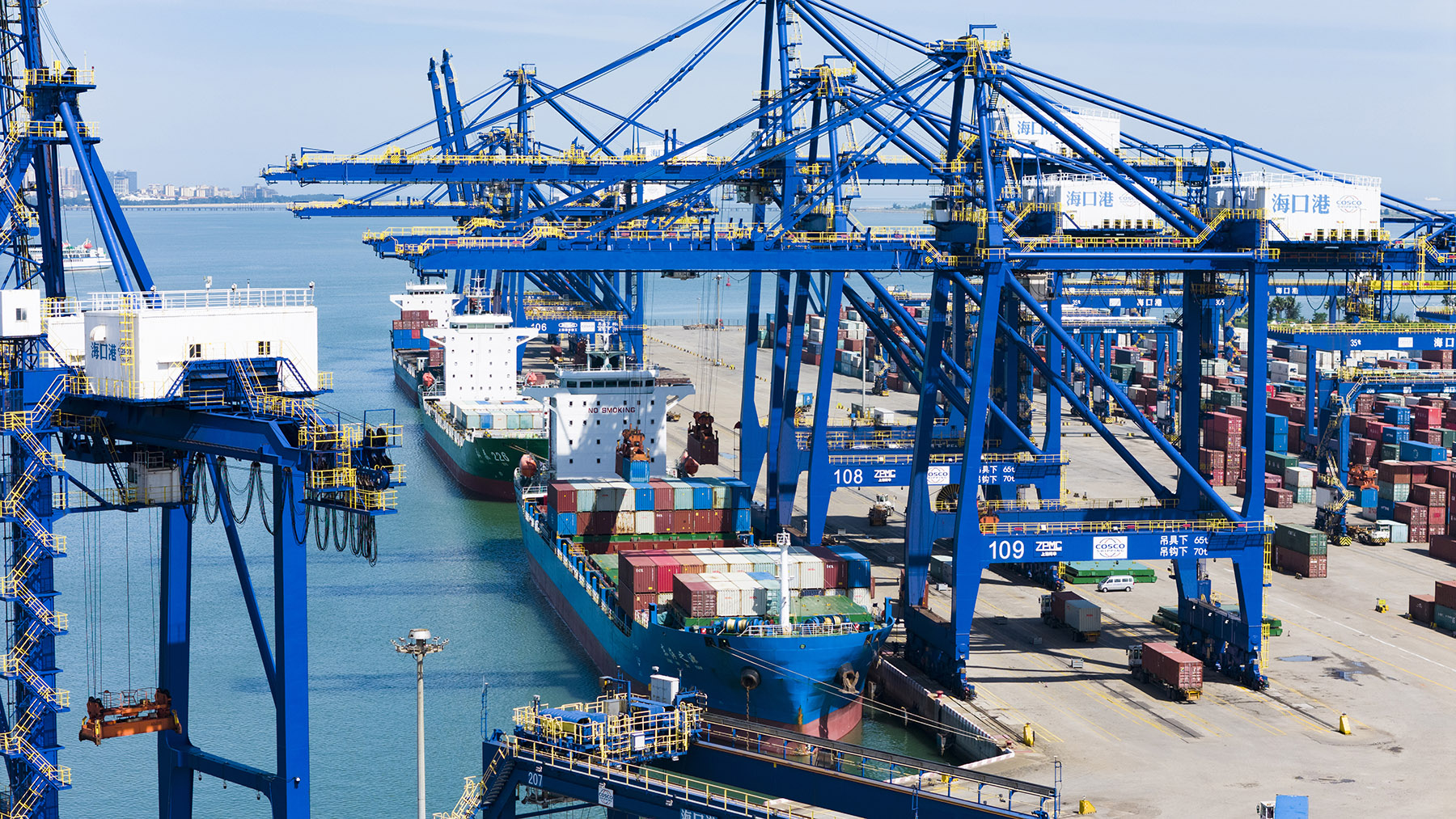Favorable tariff policies to open up major economic opportunities, say experts and business chiefs

Foreign and Chinese companies are already scrambling to explore vast opportunities on Hainan, as the island province is poised to officially begin its special customs operations next month.
Hainan Free Trade Port will implement major favorable tariff policies from Dec 18, with the proportion of products eligible for zero tariffs rising sharply from 21 percent to 74 percent.
International organizations, company executives and experts have highlighted the importance of the changes amid rising trade protectionism, saying that it fosters free trade, reinforces economic globalization, and offers a "Chinese solution "to the world.
Chinese business leaders, including Yu Minhong, chairman of New Oriental Education and Technology Group, Liu Yonghao, chairman of animal husbandry enterprise New Hope Group, and Li Shufu, chairman of automaker Geely, recently led delegations to Hainan to explore potential opportunities and negotiate collaborations with local companies.
READ MORE: Hainan FTP boosts global trade hub
They have been joined by executives from tech giants such as Huawei and Unitree Robotics.
In recent weeks, over 40 key agreements have been inked, covering sectors such as biopharmaceuticals, high-end manufacturing, the digital economy, tropical agriculture and aerospace technology. Each project signifies deeper industrial chain integration and upgrading, demonstrating the active participation of private enterprises in the Hainan Free Trade Port's development.
New Oriental's Yu has visited Hainan four times this year and spent over 25 days on the island. He said the company's training center for students who have studied abroad, located in Hainan's Lingshui Li autonomous county, is expected to commence operations by the end of this year. The center will provide project services and entrepreneurial support for returning overseas students and startup founders.
Liu of New Hope said his company is deepening cooperation with leading companies in Hainan's breeding and green food processing sectors. They are also jointly establishing the Haiken New Hope brand with Hainan State Farms Investment Holding Group.
Geely's Li said, "Launching a special customs operation is a signature project of the Hainan Free Trade Port, and will provide a rare development opportunity for the growth of the private economy."

Opening-up milestone
President Xi Jinping has made important instructions on the development of the Hainan Free Trade Port.
In December 2024, he said that Hainan should continue to free the mind, explore new ground with innovation, overcome difficulties and make steady progress in its striving to build the Hainan Free Trade Port into an important gateway driving China's opening-up in the new era and write the Hainan chapter of Chinese modernization.
Mohammed Al Zarooni, chairman of the World Free Zones Organization, said: "Hainan province's remarkable journey as China's flagship free trade port offers a real-time case study in innovation, institutional reform, and global connectivity."
The organization is one of the largest global networks of free trade zones, uniting over 1,600 members from 141 countries and regions. Hainan's pioneering role as a high-level free trade port and a dynamic hub for trade, sustainability, and innovation, highlights China's growing leadership in global trade reform, sustainability, and digital transformation, Zarooni added.
Wang Changlin, deputy head of the National Development and Reform Commission said the transition from preparation to full-scale special customs operations was a "milestone in China's pursuit of opening-up".
Starting on Dec 18, all of Hainan island will operate as a special customs supervision zone under a two-tiered system. The operations enable free trade between Hainan and areas outside China's customs border, while maintaining standard customs controls for the Chinese mainland.
Eligible goods entering or leaving the island province — unless destined for the inland areas — will be subject to fewer customs checks and lower or no tariffs.
The Hainan Free Trade Port will exempt about 6,600 product categories — 74 percent of all taxable items — from import duties, value-added tax and consumption tax, up from the current 1,900 categories. Goods imported by eligible entities from abroad, except those on a restricted list, will qualify for the exemptions, according to the policy approved by China's finance, customs and tax authorities.
These goods can circulate freely among eligible entities within the island. If they undergo at least 30 percent value-added processing in Hainan, they will be exempt from tariffs when entering the inland.
The new operations will streamline cross-border trade and reinforce Hainan's role in China's broader strategy to deepen international economic integration, experts said.
Fang Aiqing, president of the China Council for International Investment Promotion, said the special customs operations will see the implementation of more favorable zero-tariff policies for goods, relaxed trade management measures, convenient travel arrangements, and a more efficient and precise regulatory model.
"This is not only a Hainan model for China's special economic zones, but also a valuable contribution to global free trade port development," Fang said.
Li Daokui, dean of the Institute for Chinese Economic Practice and Thinking at Tsinghua University, said residents and tourists in Hainan will have access to international goods at lower prices, while entry for international vessels and personnel has been simplified through more open visa policies.
"The import tariff exemption policy for products processed in Hainan is crucial, as it significantly boosts Hainan's appeal to companies as a key manufacturing or processing hub for foreign goods to enter the Chinese mainland," Li said.

Dynamic ecosystems
The Hainan Free Trade Port represents the latest step in China's exploration of special economic zones over more than four decades.
Its origins can be traced to the establishment of the first special economic zones such as Shenzhen in Guangdong province in the 1980s, which were followed by various national-level development zones and pilot free trade zones.
These zones have been instrumental as testing grounds for opening-up, promoting industrial agglomeration, and pioneering institutional innovation, experts said.
"Such special economic zones continue their role as vanguards, actively advancing institutional opening-up in critical areas like foreign investment," said Fang from the council.
"For instance, Hainan Free Trade Port is piloting a cross-border trade services list, covering 70 special management measures across 11 categories, significantly elevating the level of openness in sectors such as finance and shipping."
The launch of Hainan's special customs operations also has major relevance for the global network of free trade zones.
"Modern free trade zones are building resilient ecosystems that extend beyond traditional tax incentives, incorporating digital single windows, market diversification strategies, and optimized logistics," said James Zhan, chairman of the Executive Board of the World Investment Conference.
Zarooni said free trade zones now account for nearly 20 percent of global trade and generate more than 90 million jobs in over 3,500 zones worldwide.
"They are transforming into dynamic ecosystems that nurture small and medium-sized enterprises, foster entrepreneurship, and integrate cutting-edge technologies to enhance competitiveness," Zarooni added.
Chi Fulin, president of the China Institute for Reform and Development, said free trade zones should emerge as leaders in regional economic integration against the headwinds of slowing global goods trade and economic nationalism.
"Strategic collaboration between hubs like Dubai, the Hainan Free Trade Port, and special economic zones in the Association of Southeast Asian Nations, or ASEAN, could potentially catalyze the formation of the world's second-largest regional market," Chi said.

Future focus
The future strategic vision for Hainan positions it as a nexus in global trade flows.
Chi believes Hainan should serve as a strategic conduit connecting China's vast domestic market with the large markets of the Regional Comprehensive Economic Partnership, or RCEP, with a particular focus on ASEAN.
By 2035, China and ASEAN are projected to be the primary engines of Asian economic growth. To realize this vision, Chi proposes the integration of Hainan's policies with the RCEP, effectively creating a synergy that could see zero-tariff coverage expanded.
Jochen Knecht, CEO of the International Free Zone Authority in Dubai, which runs one of the largest free trade zones in the United Arab Emirates, said the Hainan Free Trade Port is a gateway to Southeast Asian markets in two aspects.
"It is an opportunity for Chinese companies to find other places to extend their reach, to explore new markets, but also for companies from all over the world to come to Hainan, using Hainan as a gateway into China," Knecht said.
"If we can be a bridge for that, and help translate between other areas of the world and China with our Chinese team, I think it's a great opportunity," he added.
Pamela Mar, managing director of the Digital Standards Initiative of the International Chamber of Commerce based in Singapore, said Hainan can play an "excellent "role in demonstrating what seamless cross-border trade looks like.
"It means that Hainan systems for cross-border trade and compliance will be able to interconnect with many other trading partners, and enterprises in Hainan will be able to treat trade seamlessly using globally interoperable trade standards for data and documents," she said.
Bambang Wijanarko, head of Indonesia's Bureau for Special Economic Zone Supervision, said the Hainan Free Trade Port represented "best practice" and was achieved before his own country made the same progress.
He said Indonesia would like to learn from Hainan's experience and incentives, and maximize the "potency" of such a free trade zone. "I think it might be very useful for us," he said.

Critical phase
Building the Hainan Free Trade Port is a major step in China's strategy to advance globalization, said Zheng Yongnian, director of the School of Public Policy at the Chinese University of Hong Kong (Shenzhen).
"Hainan has developed rapidly in recent years, and the synergistic effects between its policies and the RCEP can be utilized more effectively and fully," Zheng said, adding that more efforts can be made to improve its infrastructure and accelerate its alignment with high-standard international trade rules.
A push should also be made to attract a greater number of talented people, Zheng said.
Feng Fei, Party secretary of Hainan, said the free trade port has entered a critical phase of rapid development. It's "a new frontier for China's opening-up, a hot spot for regional cooperation, and a fresh engine for economic globalization", Feng said.
ALSO READ: Hainan prepares for Customs transition
Over the past five years, Hainan has significantly expanded its global ties, with the actual utilization of foreign capital in Hainan reaching 102.5 billion yuan ($14.3 billion), averaging 14.6 percent annual growth.
In the same period, outbound investment surged to $9.78 billion, showing an average annual increase of 97 percent. New foreign-funded enterprises jumped 43.7 percent on average every year to 8,098. Annual trade in goods grew 31.3 percent on average, and services 32.3 percent on average.
The island now hosts investors from 176 countries and regions, with its economic openness ratio rising to 35 percent. Hainan also boasts China's most lenient visa-free policy, allowing travelers from 85 countries to enter without a visa.
Contact the writers at masi@chinadaily.com.cn


